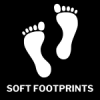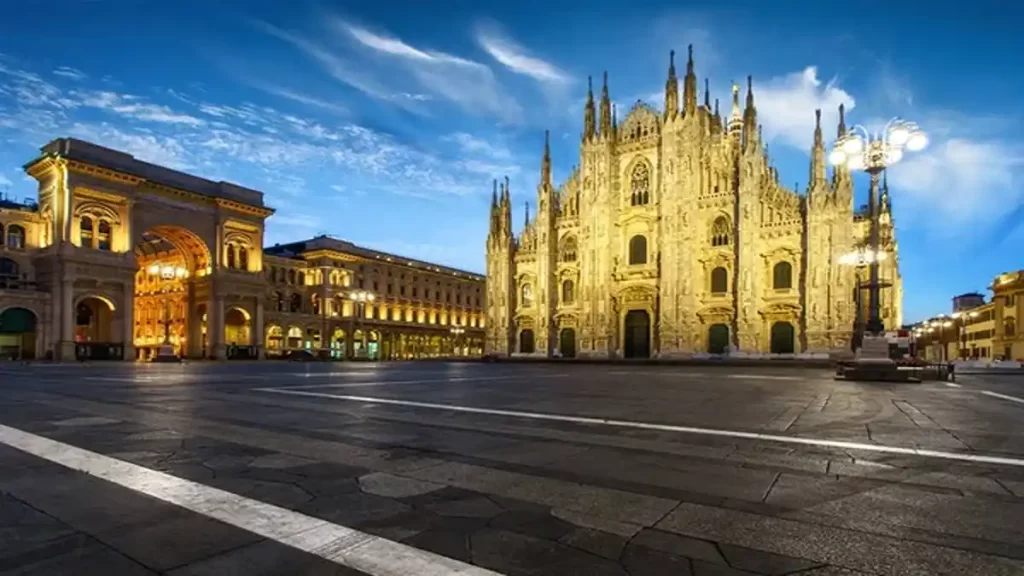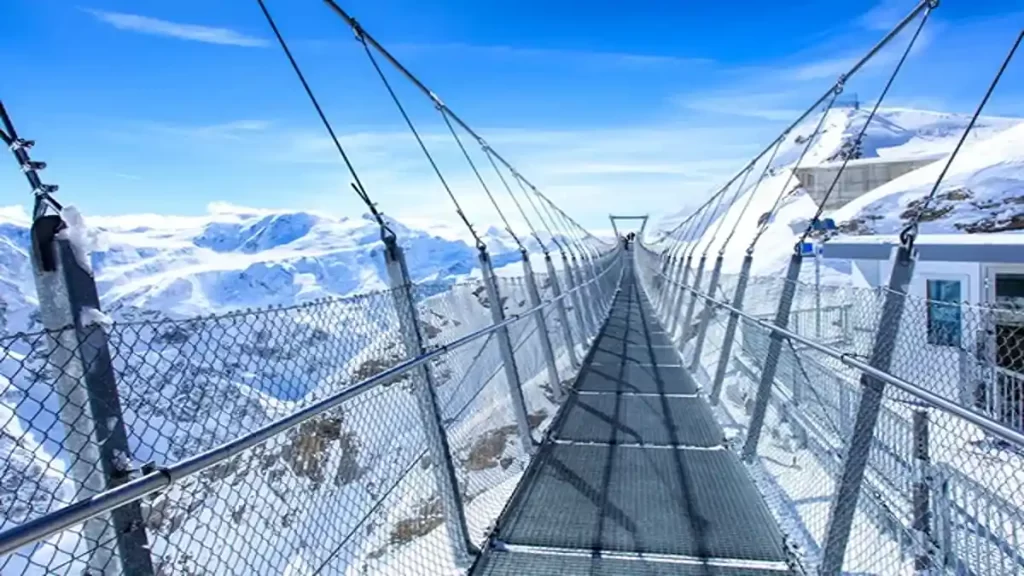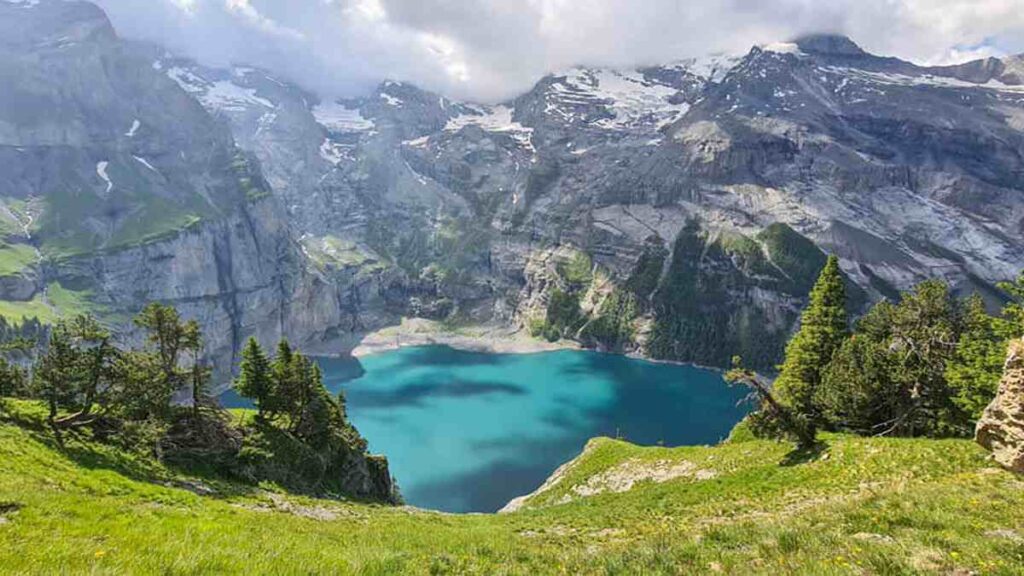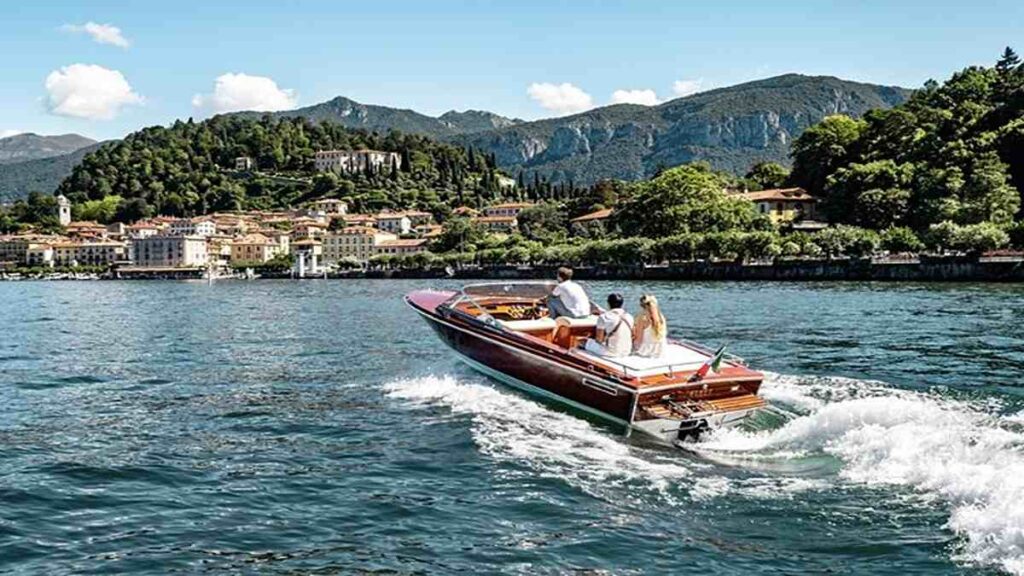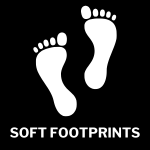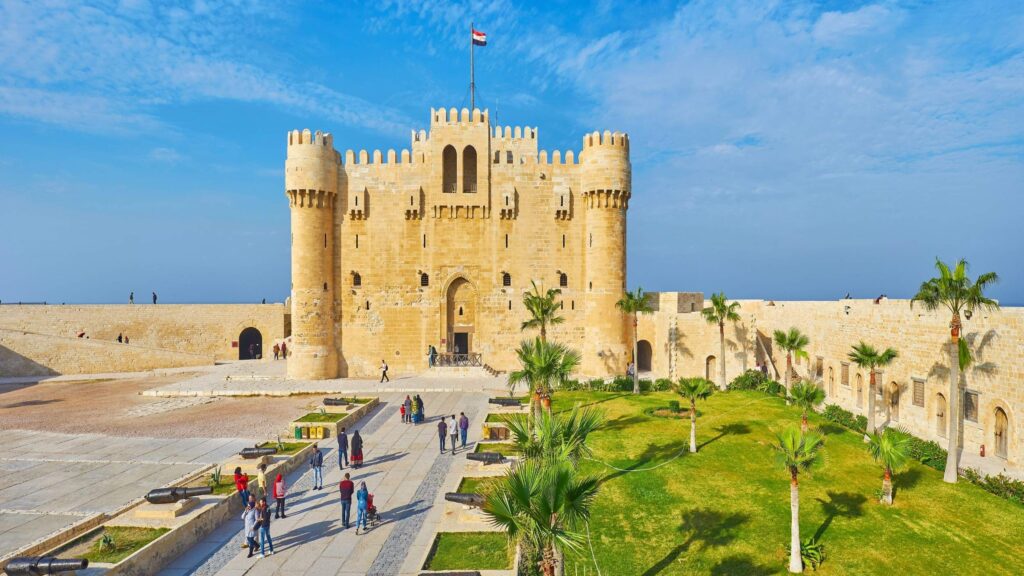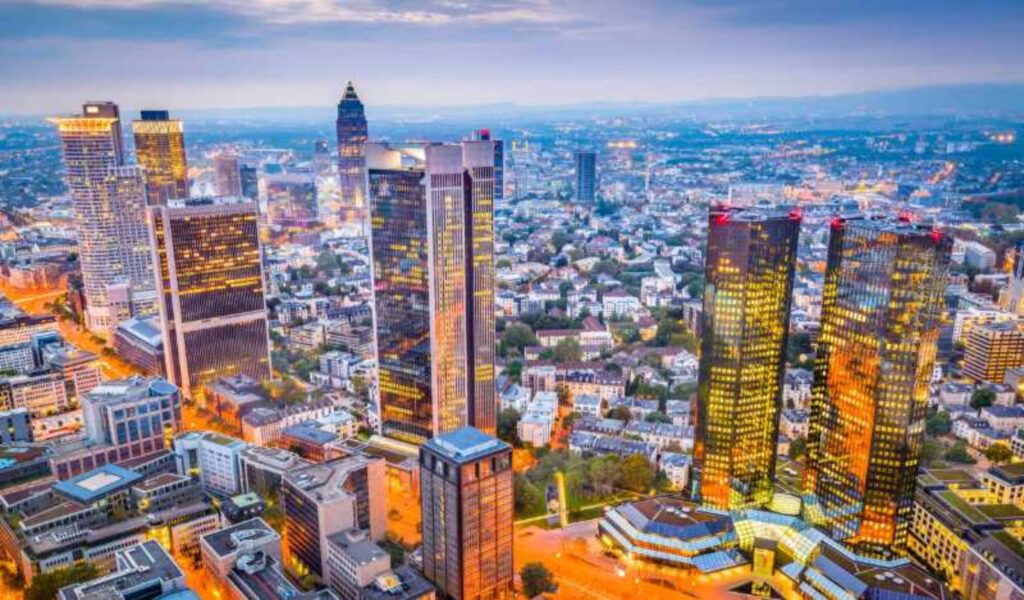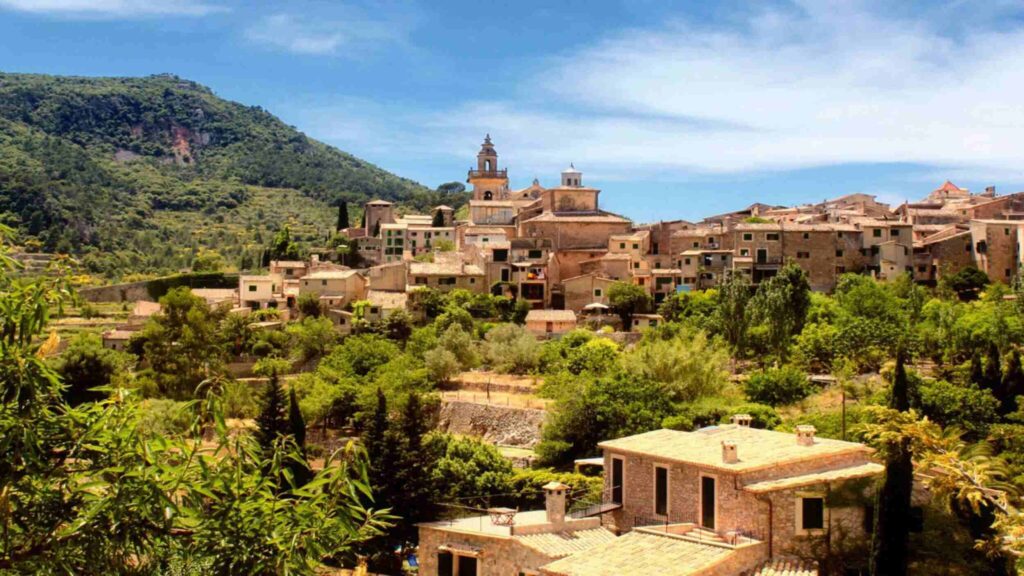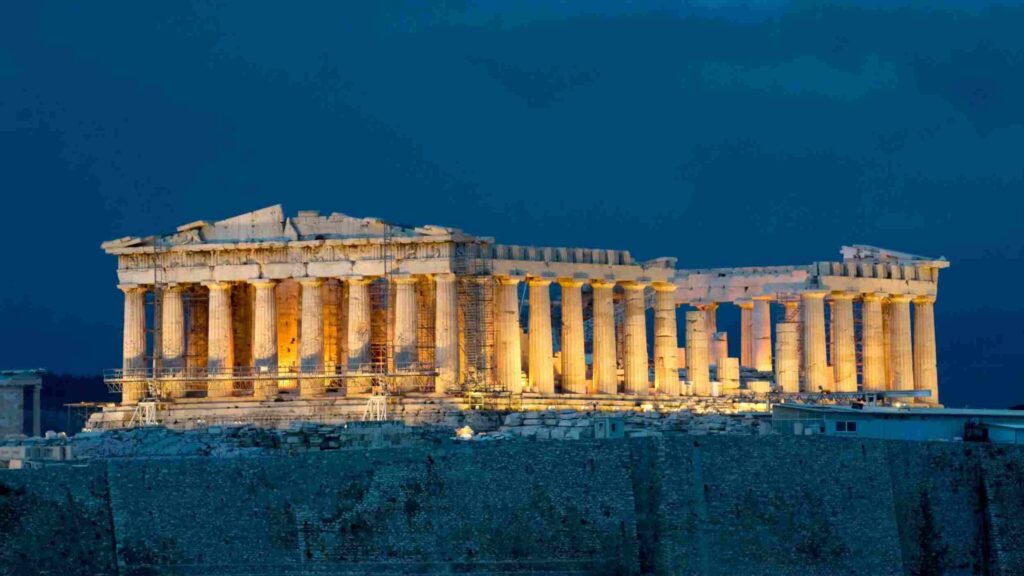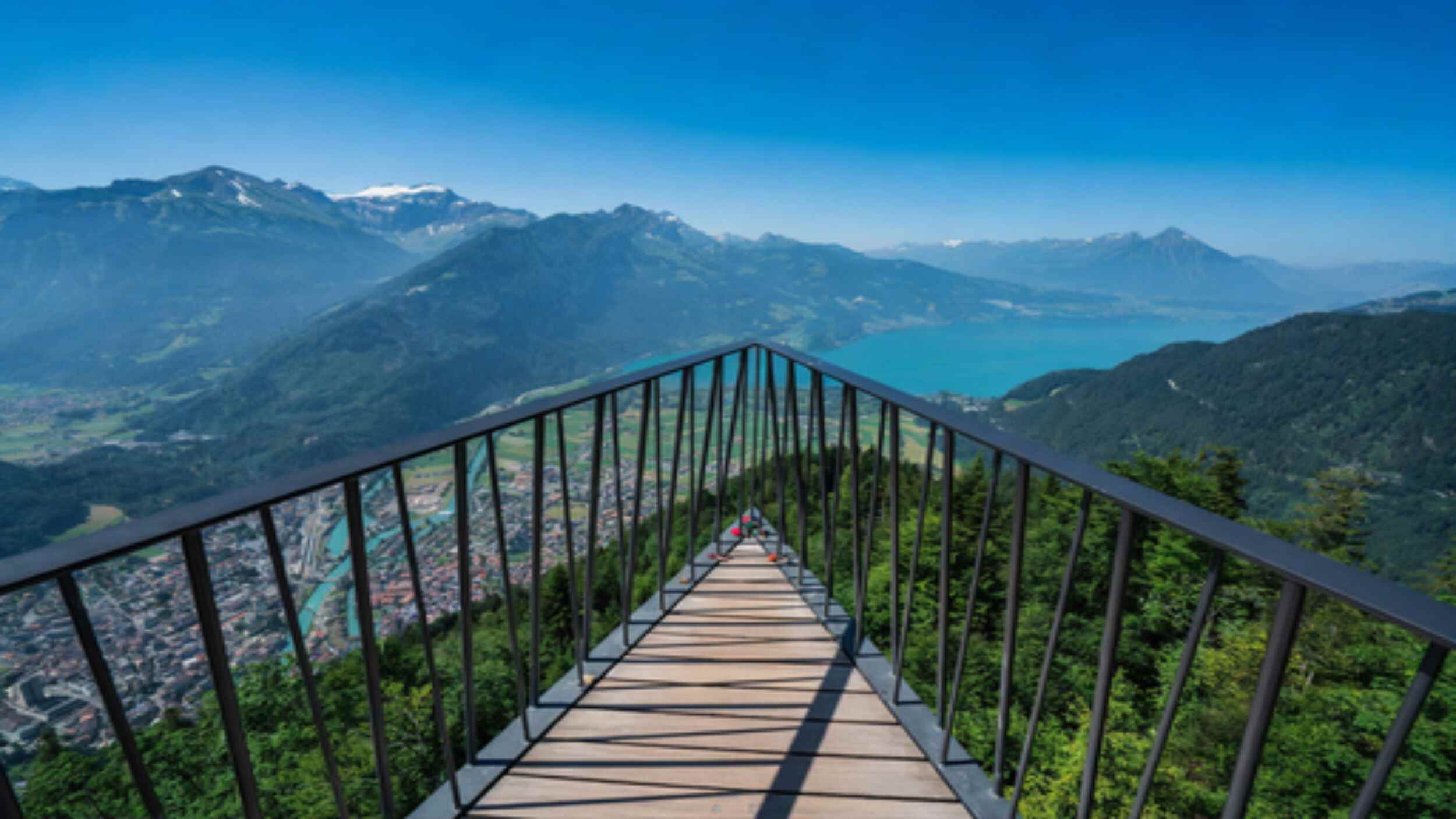
Day trips from Interlaken provide excellent access to Switzerland’s best destinations. This alpine town sits between Lake Thun and Lake Brienz, connecting visitors to mountain peaks, historic villages, and scenic waterways in the Bernese Oberland region. This guide shows 8 expertly planned day trips from Interlaken with detailed transport info and timing tips.
Each route has step-by-step transport directions, best departure times, and practical planning methods. These systems work all year, with some changes for winter conditions.
Successful day trips from Interlaken require understanding Swiss railway efficiency, regional weather patterns, and equipment needs. This approach removes guesswork while helping you explore more on your day trips from Interlaken.
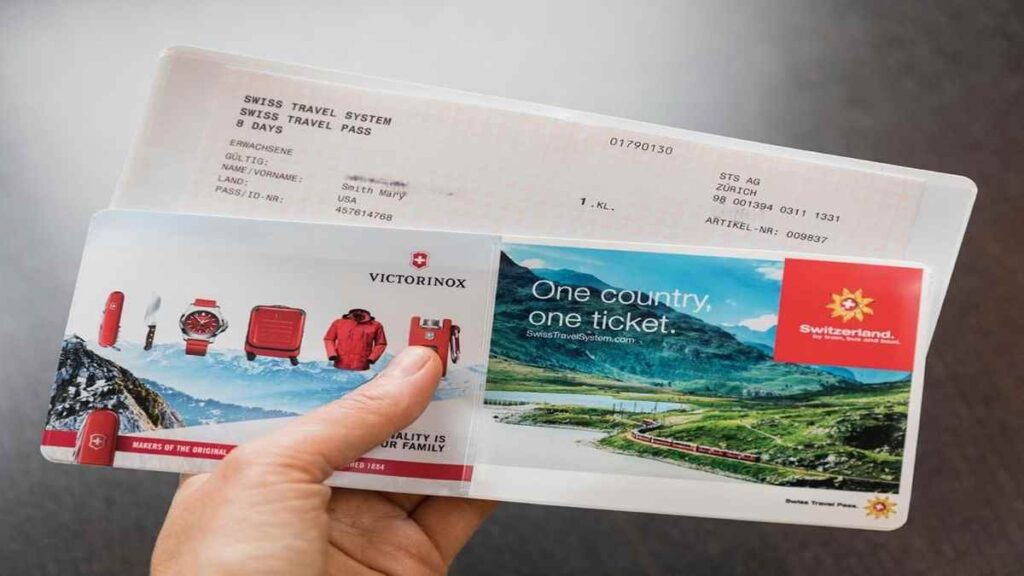
Planning Your Day Trips from Interlaken: Pass Strategy
Swiss transport passes provide major savings and make travel simple across all routes in this guide. The Swiss Travel Pass covers most places featured here, including lake boats, regional trains, and connecting bus services.
Pass Selection Strategy
Multi-day Swiss passes give best value for extended regional trips spanning three or more days. Single-day adventures need cost comparison between individual ticket prices and daily pass options. Jungfraujoch access costs extra regardless of pass type.
Regional passes like the Bernese Oberland Pass or Jungfrau Region Pass target focused exploration within specific zones. These options cover waterway transport, mountain railways, and local transit networks.
Individual ticket buying suits focused single-place adventures or small area exploration. Railway station ticket counters and the SBB Mobile app provide convenient buying options throughout Switzerland.
Pass timing strategies help maximize value through careful scheduling. Begin pass validity when starting actual travel, avoiding early activation upon Switzerland arrival. Extended passes work best when covering significant daily distances or using multiple transport modes.
Booking & Reservation Systems
Peak season Jungfraujoch access needs mandatory advance reservations from June through September. Morning departure slots offer better weather probability and reduced visitor crowds.
Flexible scheduling works well for waterway routes and most alpine destinations. Rapid weather changes throughout the Alps require adaptable itinerary management preventing bad experiences.
Digital ticketing via smartphone apps eliminates physical ticket concerns while providing real-time schedule updates. Install the SBB Mobile app before Switzerland arrival ensuring smooth transport coordination.
Backup planning involves identifying alternative return routes when primary services encounter disruptions. Swiss transport reliability remains excellent, though weather impacts mountain services more than lake transport.
Station Navigation Basics
Interlaken operates two primary railway terminals: Interlaken Ost serving Lake Brienz boats and Jungfrau region trains, plus Interlaken West handling Lake Thun boats and Bern connections.
Inter-station transfers require 15-20 minutes walking through downtown or 5 minutes via local bus service. Schedule connections properly when transitioning between different lake transport systems.
Departure platforms display on electronic boards 10-15 minutes before scheduled departure times. Swiss trains maintain precise punctuality, requiring platform arrival 5 minutes before departure minimum.
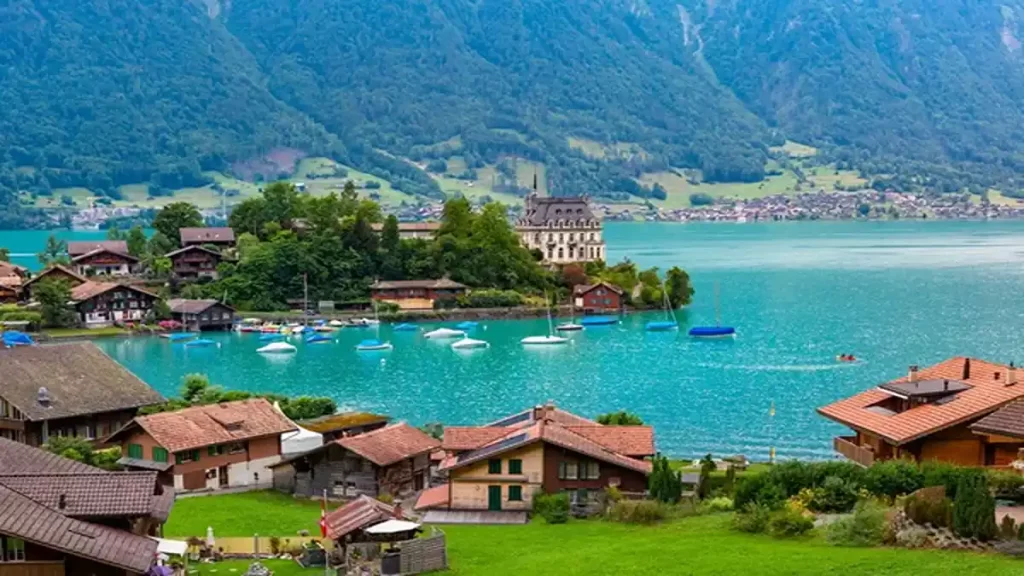
Lake Discovery Adventures
Waterway trips provide weather-resistant adventures with minimal climate dependency. Boat operations at Lake Thun and Lake Brienz continue throughout the year, although they significantly decline during the winter.
Complete Brienz Lake Circuit
Start departure from Interlaken Ost terminal at 9:00 AM for optimal scheduling. Navigate 200 meters to boat boarding area following clear directional signs. Board the Giessbach-bound boat for a scenic 60-minute ride across crystal-clear waters.
Giessbach Falls plunges dramatically 500 meters through fourteen distinct cascade tiers. The historic funicular railway links the waterfront dock to Grandhotel Giessbach and the best spots for viewing the waterfalls. Allow 45 minutes for complete cascade exploration including behind-the-falls walkways.
Best photography occurs during morning light on cascading water (ideally before 11:00 AM) plus panoramic lake views from Grandhotel Giessbach terracing. The distinctive red funicular creates compelling foreground elements for waterfall compositions.
Continue toward Brienz township via continuing boat service (30 minutes from Giessbach). This authentic alpine village specializes in traditional wood carving crafts with multiple artisan workshops available for visitor observation. Restaurant Steinbock provides regional cuisine near the harbor with expansive lakeside terrace seating.
Village exploration encompasses the wood carving museum, traditional craft boutiques along Hauptstrasse, plus the cogwheel railway terminal accessing Rothorn summit (seasonal operation). Reserve 90 minutes for thorough village discovery including artisan demonstrations.
Return journey to Interlaken via boat (1.5 hours) or combined boat-train routing for transport variety. Railway routing delivers alternative mountain perspectives requiring 45 minutes total including Brienz station connections.
Essential equipment includes comfortable walking footwear for village cobblestone surfaces, lightweight rain protection against waterfall mist, plus portable device charging for extended photography sessions.
Historic Thun Castle Route
Start departure from Interlaken West at 9:30 AM accessing Lake Thun boat services. The boarding dock adjoins the railway terminal with multilingual platform announcements.
Oberhofen Castle represents the primary destination (45 minutes from Interlaken). This remarkable fortress from the 13th century features beautifully maintained historical chambers and stunning gardens by the water. Allow 90 minutes for complete castle exploration including the exotic Turkish smoking chamber and medieval tower ascent.
Castle logistics involve separate admission fees beyond transport pass coverage, restricted photography within historical chambers, plus seasonal garden accessibility. Café Oberhofen supplies refreshments with spectacular castle vista seating.
Spiez Castle occupies a distinctive peninsula position 15 minutes further via boat. The fortress houses regional history exhibits while offering panoramic lake perspectives from the central tower. Adjacent Hotel Seegarten Marina provides excellent dining options with outdoor terrace arrangements.
Spiez village exploration includes the charming medieval quarter, traditional architecture along Schlossgasse, plus picturesque lakefront promenades ideal for leisurely walks between boat departures.
Thun municipality concludes the route featuring its elevated old quarter and imposing Thun Castle. The historic town provides extensive shopping along Bälliz pedestrian zone, diverse dining establishments, plus efficient railway connections returning to Interlaken (30 minutes by train versus 2.5 hours via boat).
Schedule optimization suggests morning castle visits during favorable photographic lighting conditions, midday dining in Spiez or Thun, plus afternoon return enabling comfortable evening Interlaken arrival.
Dual Lake Express Route
This intensive routing combines both magnificent lake systems within single-day parameters, demanding early start and efficient scheduling. Begin at 8:00 AM from Interlaken Ost accessing Lake Brienz for optimal morning lighting conditions.
Morning focus on Lake Brienz includes boat transport to Giessbach plus waterfall visitation (3 hours total duration). Bypass extensive village exploration in Brienz maintaining schedule efficiency. Return to Interlaken by 12:30 PM for dining and transport transition.
Transfer logistics encompass 15-minute walking between Interlaken Ost and Interlaken West terminals, quick lunch at Restaurant Taverne near West station, plus afternoon boat departure by 2:00 PM.
Afternoon transition to Interlaken West for Lake Thun boat access. Focus on single castle destination (Oberhofen or Spiez) plus return via evening boat or railway for diverse transport experiences.
Energy management requires minimal packing strategies, comfortable footwear for terminal transfers, plus realistic expectations regarding exploration depth at individual destinations.
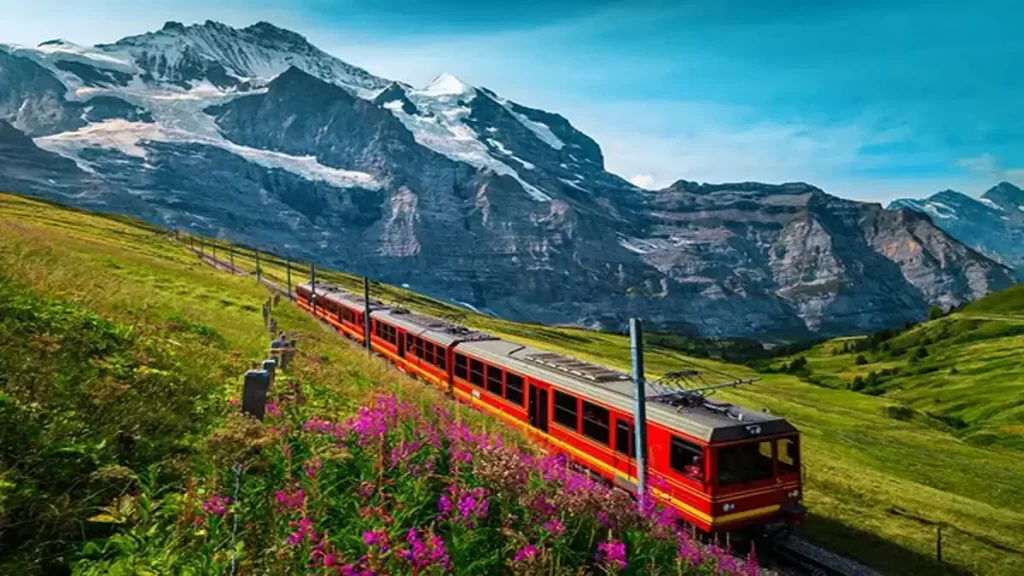
Alpine Peak Adventures
Mountain trips depend critically on weather conditions and seasonal accessibility. Monitor forecasts using MeteoSwiss app while maintaining backup plans for overcast days. Most alpine destinations suspend operations or reduce services November through March.
Classic Jungfraujoch Experience
Europe’s premier alpine railway terminal demands advance planning plus early departure scheduling. Start from Interlaken Ost at 7:30 AM reaching Lauterbrunnen (20 minutes via train from platform 2B).
Transfer at Lauterbrunnen accessing cogwheel railway toward Kleine Scheidegg (45 minutes duration). This spectacular segment provides dramatic waterfall perspectives including Staubbach Falls plus traditional village panoramas. Select right-side seating for optimal Lauterbrunnen Valley views.
Kleine Scheidegg junction offers convenient connection opportunities plus Restaurant Kleine Scheidegg for refreshments before final ascent. This strategic location provides magnificent Eiger North Face observation plus hiking trail access during summer months.
The journey to the summit from Kleine Scheidegg to Jungfraujoch takes 50 minutes via the Eiger tunnel, with short stops at the Eigerwand and Eismeer observation stations. The Top of Europe complex includes glacier viewing platforms, an ice palace, and dining options.
Summit activities include Aletsch Glacier observation platform, Ice Palace tunnel network, Sphinx Observatory elevator access, plus outdoor glacier hiking (summer exclusively with appropriate equipment).
Allow 4-5 hours total for complete journey including summit exploration time. Restaurant Top of Europe provides mountain cuisine with premium pricing reflecting extreme elevation. Pack provisions and hydration for cost management.
Descent alternatives include identical routing or alternative Grindelwald descent for varied mountain scenery. The Grindelwald option adds 30 minutes while providing different alpine perspectives plus village exploration opportunities.
Weather considerations include morning departure for clearest summit conditions, warm layering for 3,500-meter elevation, plus protective eyewear against intense glacier reflection.
Harder Kulm & First Combination
Harder Kulm delivers Interlaken’s premier panoramic overview requiring minimal time investment. The quick funicular from the center of Interlaken takes just 10 minutes to reach the summit, with departures every 30 minutes during its operating hours.
Morning at Harder Kulm encompasses panoramic viewing of both lake systems, Jungfrau mountain range, plus Interlaken urban layout. Restaurant Harder Kulm serves quality refreshments and breakfast with expansive outdoor terrace access. Plan 90 minutes total including funicular transport plus photography sessions.
Photography strategy favors morning light for pristine lake reflections plus crystal-clear mountain visibility. The observation platform delivers spectacular 360-degree perspectives with Jungfrau, Mönch, and Eiger peak identification displays.
Afternoon transition to Grindelwald via railway (35 minutes from Interlaken) allows strategic lunch scheduling in town center. Restaurant Taverne or Café 3692 provide traditional alpine options before cable car ascent.
Grindelwald First cable car maintains year-round operational schedules with summer hiking extensions plus winter skiing access. The renowned First cliff walk, suspension bridge, plus mountain cart activities accommodate various adventure preferences.
First activities encompass thrilling cliff walk (30 minutes), Bachalpsee hiking expedition (1.5 hours round trip), exciting mountain carting, zip line systems, plus trottibike descents. Restaurant Bergsee at First station serves excellent mountain cuisine with breathtaking alpine panoramas.
Return to Interlaken via railway enables comfortable evening arrival following mountain experiences. Final train from Grindelwald departs 9:47 PM during summer operational schedules.
Schynige Platte Botanical Adventure
This specialized route combines historic cogwheel railway travel with alpine hiking opportunities. Start from Interlaken to Wilderswil (8 minutes via train) with convenient 30-minute connection intervals.
Schynige Platte cogwheel railway operates seasonally (typically May through October) requiring 55 minutes reaching summit station at impressive 1,967 meters elevation.
Alpine hiking options encompass botanical flower trail (45 minutes) featuring 650 documented alpine plant species, panoramic trail (2 hours) with Eiger, Mönch, Jungfrau perspectives, or challenging summit hike (3 hours) to Gumihorn peak.
Botanical garden at Schynige Platte displays Swiss alpine flora with detailed specimen labeling plus seasonal blooming information. Hotel Schynige Platte offers excellent refreshments and comfortable overnight stays for those looking to explore further.
Weather dependency creates significant challenges during overcast conditions affecting visibility. Clear days reveal spectacular perspectives across Bernese Oberland including distant peaks plus interconnected lake systems.
Photography equipment should encompass macro lens capabilities for detailed flower documentation plus wide-angle options for expansive panoramic mountain compositions.
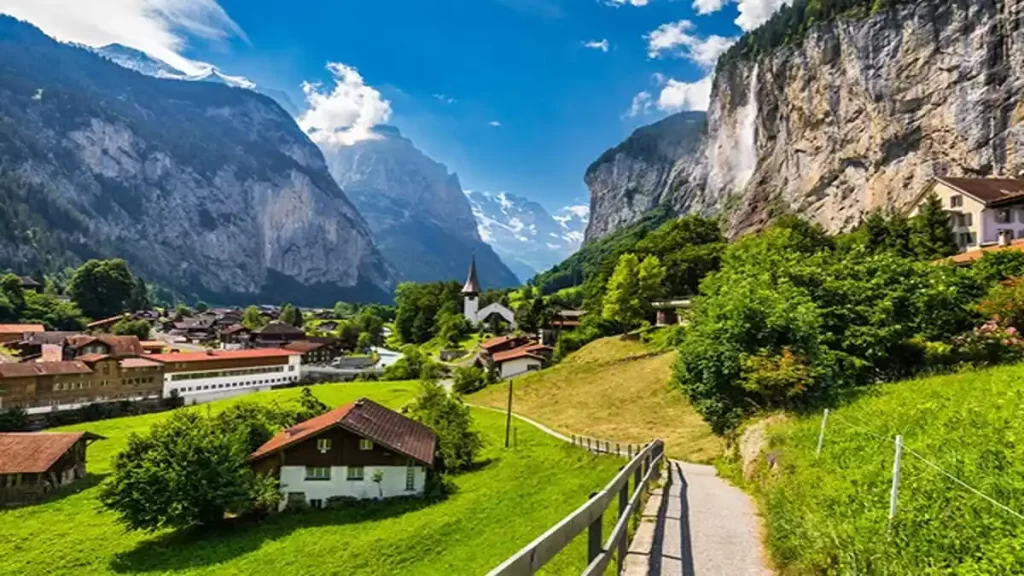
Traditional Village Immersion
Authentic villages deliver rich cultural experiences beyond scenic transport adventures. These routes function effectively during marginal weather when mountain peaks remain obscured by clouds.
Complete Lauterbrunnen Valley
Lauterbrunnen Valley contains an impressive 72 waterfalls while serving as gateway to car-free mountain communities. Start your journey on the train from Interlaken to Lauterbrunnen, which takes about 20 minutes, with regular departures from platform 2B.
Valley floor exploration encompasses spectacular Staubbach Falls (five-minute walk from station), Trümmelbach Falls (bus connection required), plus traditional village architecture along historic Hauptstrasse.
Trümmelbach Falls requires separate transport via postal bus (10 minutes from Lauterbrunnen station) representing Europe’s largest subterranean waterfall system. Allow 90 minutes including transport plus cave exploration.
Stechelberg cable car delivers access to picturesque Mürren and Gimmelwald. Mürren occupies dramatic cliff plateau positioning with spectacular Eiger, Mönch, and Jungfrau perspectives plus traditional architecture and extensive hiking trail access.
Gimmelwald village provides authentic mountain culture featuring traditional farming operations, significantly reduced tourist presence, plus Hotel Mittaghorn for quality refreshments. This community without cars upholds the traditional lifestyle practices of the Swiss Alps.
Wengen accessed via cogwheel railway from Lauterbrunnen showcases traditional architecture plus extensive hiking trail networks. Hotel Regina Wengen exemplifies classic alpine hospitality with terrace dining plus magnificent mountain perspectives.
Transport networks allow for village hopping across the valley by using cable cars, trains, and hiking trails, providing a full cultural immersion experience. Additionally, day passes encompass multiple village visits efficiently.
Full Grindelwald Experience
Grindelwald village merges traditional alpine architecture with contemporary mountain access systems. Train travel from Interlaken to Grindelwald takes just 35 minutes, with convenient departures every hour.
Village exploration encompasses traditional chalets along Dorfstrasse, specialized local boutiques featuring mountain equipment, plus Grindelwald Museum for regional history. Restaurant Taverne serves authentic local specialties in village center with pleasant outdoor seating.
Traditional activities include trips to working farms, captivating cheese-making demonstrations at nearby dairies, and wood carving workshops that preserve local crafts.
First cable car system delivers multiple activity levels from comfortable observation platforms to challenging alpine hikes. The renowned Cliff Walk provides suspended walkway experiences 40 meters above dramatic valley floor.
Adventure activities at First encompass exciting mountain carting (2.7 km descent), zip line networks, trottibike rentals, plus alpine slide during summer operations.
Bachalpsee hiking expedition (1.5 hours from First station) leads to pristine mountain lake reflecting majestic Wetterhorn and Schreckhorn peaks. This moderate difficulty hike accommodates most fitness levels with well-maintained trail systems.
Alternative activities include Pfingstegg cable car for spectacular glacier perspectives plus hiking access, village tennis facilities, plus traditional Swiss evening entertainment at authentic local establishments.

Weather-Based Planning Systems
Climate patterns significantly influence route selection and scheduling strategies. Understanding seasonal variations prevents disappointing experiences plus wasted transport investments.
Summer Peak Strategy (June-September)
Peak season provides maximum transport options while creating highest visitor concentrations at popular destinations. Start early departures (7:00-8:00 AM) for improved weather windows plus reduced crowds at major attractions.
Mountain routes perform optimally during stable weather periods typically occurring during early morning hours. Monitor forecasts using MeteoSwiss app while maintaining lake route alternatives for overcast days.
Hiking conditions remain optimal with extended daylight hours (sunrise 5:30 AM, sunset 9:00 PM in July) plus stable temperature ranges. All cable cars and mountain railways operate complete seasonal schedules.
Crowd management requires strategic scheduling with popular destinations like Jungfraujoch and First experiencing peak visitor concentrations between 10:00 AM and 4:00 PM.
Winter Modifications (December-March)
Reduced schedules significantly impact all transport modes throughout the region. Lake Brienz boats operate weekend schedules exclusively, while Lake Thun maintains daily service with substantially limited frequency.
Mountain access becomes considerably restricted with numerous cable cars closed for maintenance periods. Jungfraujoch remains accessible requiring appropriate warmer clothing plus weather awareness for outdoor activities.
Village routes provide reliable exploration options during challenging winter months. Traditional Christmas markets, winter sports activities, plus indoor cultural experiences supplement summer hiking alternatives.
Equipment requirements encompass winter clothing layers, waterproof footwear systems, plus portable warming accessories for extended outdoor exposure.
Shoulder Season Advantages (April-May, October-November)
Reduced crowds plus stable transport schedules create ideal conditions for numerous routes. However, weather patterns remain unpredictable yet manageable with appropriate preparation strategies.
Cost benefits include substantially decreased accommodation pricing plus fewer advance reservation requirements. Transport passes deliver identical value propositions with significantly less crowded conditions.
Photography opportunities improve dramatically with clearer atmospheric conditions plus dramatic lighting phenomena common during seasonal transition periods. Alpine colors reach peak intensity during late September and early October.
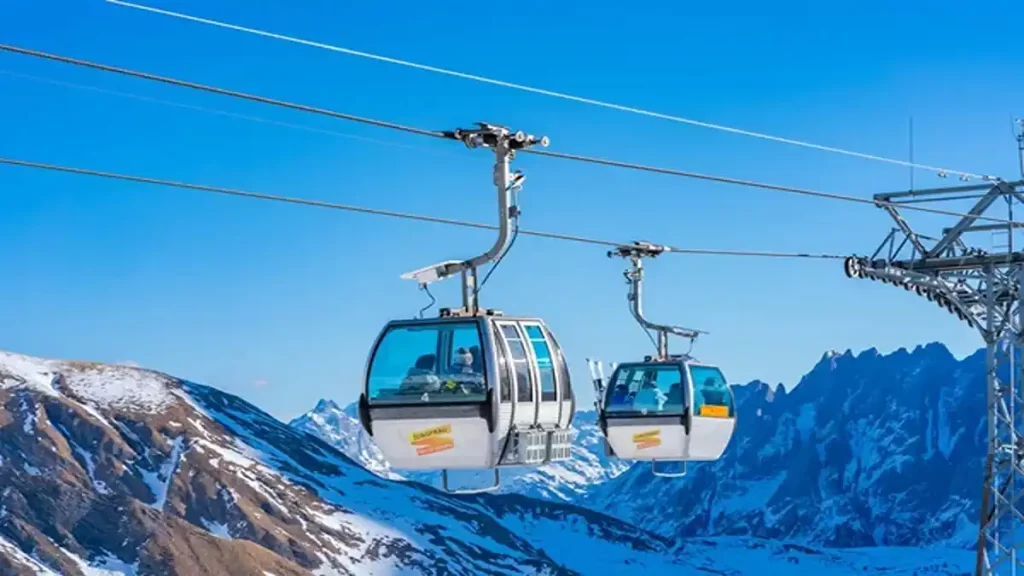
Strategic Route Selection
Optimal route selection depends on prevailing weather conditions, individual fitness capabilities, plus personal interest priorities. This framework simplifies decision-making for superior adventure experiences.
Climate-Based Decisions
Clear weather days favor mountain routes with exceptional panoramic observation opportunities. Jungfraujoch, Schynige Platte, plus First deliver maximum experiential value during crystal-clear conditions with visibility exceeding 50 kilometers.
Overcast conditions work effectively for village routes plus covered activity options. Lauterbrunnen Valley villages, Trümmelbach Falls, plus castle visits continue successfully regardless of cloud cover affecting mountain peak visibility.
Rainy weather necessitates indoor-focused activities or sheltered transport options. Lake boat excursions provide excellent protection while maintaining scenic experiences through large panoramic windows plus covered deck areas.
Wind considerations affect cable car operations significantly more than trains or boats. Strong wind conditions may suspend mountain cable services while ground transport continues normal operations.
Physical Capability Matching
Minimal exertion routes encompass comfortable lake boats, village trains, plus limited walking requirements. Specifically, Thun Castle Explorer and the Classic Brienz Circuit are designed to cater to all mobility levels, offering accessible transportation and facilities.
Moderate activities involve 1-2 hours hiking with well-established trail systems plus 200-500 meter elevation changes. Grindelwald Complete and Lauterbrunnen Valley routes offer scalable difficulty levels accommodating various fitness ranges.
Demanding options require 3+ hours hiking or substantial elevation changes exceeding 500 meters. Schynige Platte hiking plus Bachalpsee trail expeditions demand good fitness levels plus appropriate hiking equipment.
Interest-Based Matching
Cultural focus suits village immersion routes featuring traditional architecture, authentic local customs, plus genuine cultural experiences. Lauterbrunnen Valley and Grindelwald provide meaningful interactions with local alpine communities.
Photography priorities favor clear weather mountain routes plus dramatic landscape opportunities. Jungfraujoch and Harder Kulm combinations offer varied photographic perspectives from multiple elevation levels.
Family activities work optimally with shorter transport segments plus engaging destination features. Trümmelbach Falls and First adventure activities suit family groups with children over 6 years.
Adventure seekers prefer routes offering significant physical challenges plus unique excitement experiences. Mountain hiking expeditions, cliff walks, plus alpine adventure activities also provide adrenaline-focused alternatives.
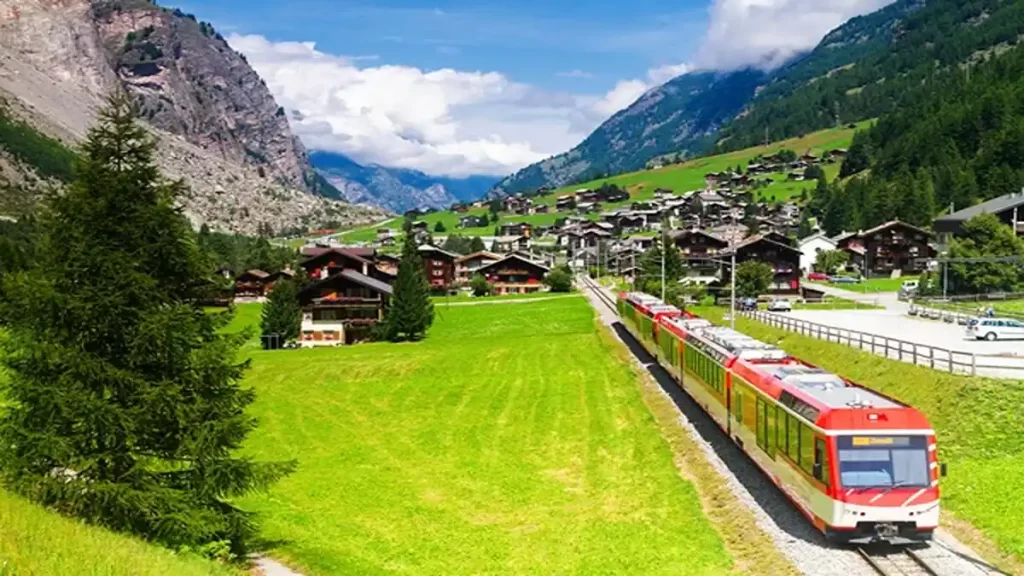
Advanced Transport Coordination
Efficient transport planning maximizes valuable destination time while minimizing travel complications and delays. These proven systems apply across all route categories for smooth execution.
Connection Management Strategy
Buffer periods between transport connections prevent missed services plus reduce stress levels significantly. Allow 10-15 minutes for train connections plus 20-30 minutes for boat transfers including necessary walking time.
Real-time information through SBB Mobile app provides current delay data plus alternative routing suggestions. Download this essential app before departure plus enable push notifications for updates.
Backup routes assist effectively when primary transport encounters delays or operational cancellations. Identify alternative return methods for each destination before departure including bus plus taxi backup options.
Platform modifications occur occasionally due to maintenance requirements or operational adjustments. Monitor station information displays plus app notifications for last-minute platform updates.
Equipment & Preparation Essentials
Weather preparation encompasses appropriate layered clothing plus rain protection regardless of morning conditions. Mountain weather changes rapidly throughout days with temperature drops of 10-15 degrees at higher elevations.
Appropriate footwear accommodates various terrain types encountered during single-day exploration adventures. Quality hiking boots function effectively for most routes while providing village walking comfort on cobblestone streets.
Digital preparation includes downloaded transport apps, offline mapping systems, plus portable charging equipment for complete full-day independence. Switzerland provides excellent cellular coverage though battery drain increases with frequent app usage.
Photography equipment should encompass backup batteries, additional memory cards, plus protective cases for weather changes. Mountain environmental conditions can damage sensitive electronic equipment without proper protection.
Emergency contacts plus local phone numbers provide essential security during independent exploration adventures. Swiss emergency number 144 covers medical emergencies throughout the region with English-speaking emergency operators.
Local Intelligence & Advanced Tips
Restaurant timing varies considerably by location with some mountain establishments closing between lunch and dinner service periods. Verify operating hours especially during shoulder season periods.
Souvenir purchasing costs substantially less in authentic villages compared to mountain summit retail locations. Grindelwald and Lauterbrunnen offer significantly better prices than Jungfraujoch commercial establishments.
Local customs encompass quiet hours on public transport, removing backpacks in crowded spaces, plus greeting fellow hikers on mountain trail systems. Swiss operational efficiency extends to established social expectations.
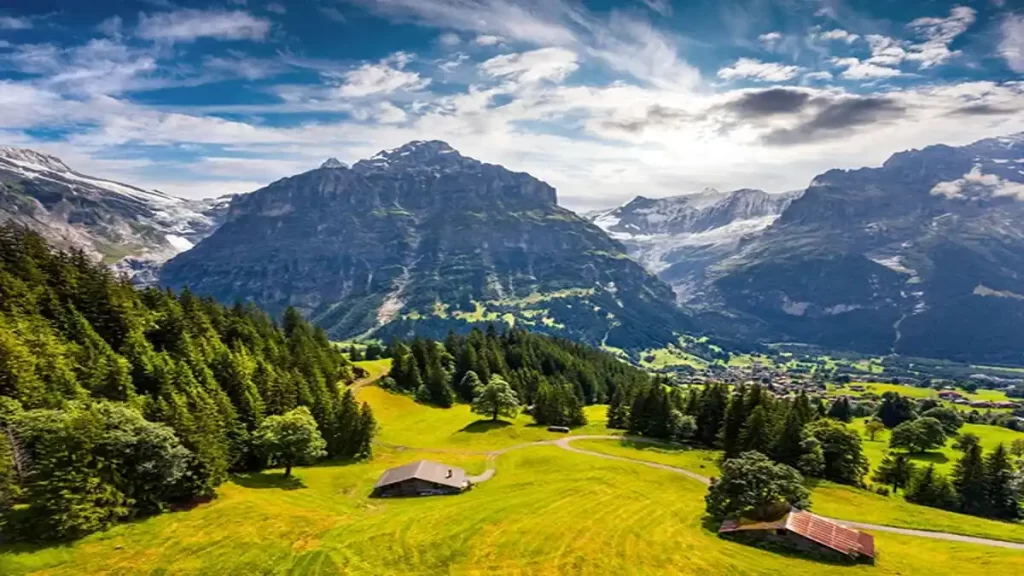
Complete Planning Framework
Successful adventures require thorough advance planning plus realistic expectation establishment for optimal experiences. These considerations prevent common planning errors while optimizing adventures for diverse travel preferences.
Schedule Optimization
Early departure strategies improve weather probability plus reduce crowd concentrations at popular destinations. Most routes benefit substantially from 7:00-8:00 AM starts with first available transport connections.
Meal planning affects overall schedule flexibility plus budget management. Grandhotel Giessbach, Restaurant Harder Kulm, plus village restaurants provide diverse dining options along routes with varying price levels.
Return scheduling should account for transport frequency reductions during evening operational hours. Final boats and trains operate less frequently after 6:00 PM with last services around 8:00-9:00 PM.
Schedule buffers include 30-60 minutes extra time for unexpected delays, extended photography opportunities, or spontaneous exploration discoveries along planned routes.
Financial Planning Framework
Transport expenses also represent the largest cost category for most route experiences. Swiss Travel Pass or specialized regional passes provide substantial savings for multiple-route exploration over 3+ consecutive days.
Dining expenses vary dramatically between mountain restaurants (25-40 CHF per meal) and village establishments (15-25 CHF per meal). Pack provisions strategically for cost control plus schedule flexibility.
Activity charges encompass cable cars, museums, plus special attractions beyond basic transport coverage. Research additional costs before departure avoiding budget surprises during route execution.
Souvenir budgeting should account for quality Swiss products commanding premium pricing structures. Traditional crafts, chocolates, plus outdoor equipment represent authentic purchase opportunities.
Group Coordination Systems
Large groups (8+ people) require advance coordination plus possible reservations for restaurant meals and specialized activity participation. Contact establishments directly for group arrangements.
Mixed capabilities within groups benefit from route selection offering multiple difficulty levels plus convenient bailout options. Choose routes with intermediate stops allowing group separation plus scheduled reunion.
Children considerations encompass shorter attention spans, enhanced safety requirements, plus age-appropriate activity selections. Trümmelbach Falls and First adventure activities particularly suit supervised family groups.
Senior travelers benefit from routes emphasizing comfortable transport over strenuous hiking requirements. Lake routes plus village exploration provide excellent experiences without demanding physical requirements.
These eight routes deliver complete Interlaken area exploration accommodating various interests, fitness capabilities, plus weather conditions. Also each route encompasses detailed transport systems plus scheduling strategies for independent execution. Success depends on thorough advance planning, weather monitoring, realistic schedule expectations, plus appropriate equipment preparation for challenging Swiss alpine environments.
